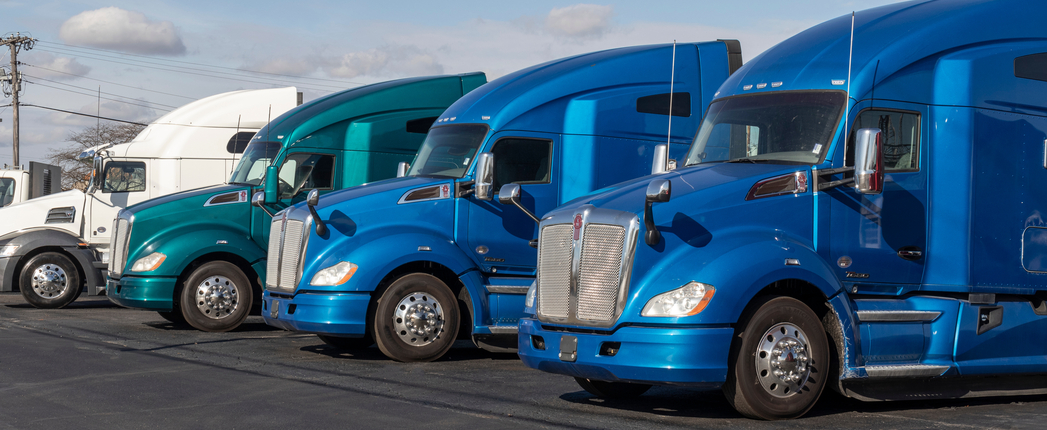
The years-long process of writing the next heavy-duty diesel engine oil category began last week when the American Petroleum Institute’s Lubricants Group voted to establish a New Category Development Team for PC-12.
The new category is expected to offer benefits such as improved engine durability and help meeting tougher environmental regulations.
The Engine Manufacturers Association asked the Diesel Engine Oil Advisory Panel – which was formed jointly by the engine manufacturers and API – to develop PC-12. The advisory panel formed a New Category Evaluation Team to assess the request. During the ASTM D2 meetings held Dec. 5-9 in Anaheim, California, the evaluation team voted to recommend proceeding with development. The advisory panel approved the recommendation, and API’s Lubricants Group voted to form the category development team.
API asked that commercial introduction of the category occur no later than Jan. 1, 2027, according to the Dec. 10 announcement from Jeffrey Harmening, senior manager for the Engine Oil Licensing and Certification System, Diesel Exhaust Fluid Certification and Motor Oil Matters programs with the American Petroleum Institute. This coincides with the anticipated 2027 implementation date for more stringent on-highway fuel economy and emissions regulations from the U.S. Environmental Protection Agency and the California Air Resources Board.
On Aug. 5, EPA announced plans to reduce greenhouse gas emissions and other harmful air pollutants from heavy-duty trucks through a series of rulemakings over the next three years. The first change, to be finalized in 2022, will apply to heavy-duty vehicles starting in model year 2027. The California board adopted a regulation that requires truck and engine manufacturers to reduce nitrogen oxide emissions from new heavy-duty trucks by 90% starting in 2027.
The PC-12 recommendation requests that Dec. 1, 2026, be considered as the date for first license. This is similar to the PC-11 licensing timeline, which resulted in adoption of newest categories. In February 2016, the API Lubricants Group officially adopted the PC-11, which had been split into two categories that were renamed API CK-4 and API FA-4. Development of PC-11 began in 2011, and the resultant categories had their commercial introduction in December 2016.
“One cannot predict what delays may be experienced during the PC-12 development at this early stage,” Harmening said. “The PC-11 delays were overwhelmingly due to delays in category engine test development.” He added that the Engine Manufacturers Association has not provided any guidance on ways to avoid delays as part of the new category request.
Those involved in the process expect that PC-12 will again be divided into two specifications – the C subcategory for oils that are backwards compatible with previous specs, and the F subcategory, which would replace FA-4 and which need not be backwards compatible. The potential for existing engine tests becoming obsolete will be addressed as needed, he said.
Engine manufacturers want the new category to enable engine technologies that would raise brake mean effective pressure, to meet customer demands for higher oil performance, and to maintain oil contributions toward fuel economy for longer periods of time, Harmening said. The development phase will address the topic of how oils can enable higher braking effective pressures, he said. Other potential benefits to diesel engines include supporting requirements for fuel economy for certain engine models and supporting new elastomers used in modern engines.
“Fleets and drivers should expect improved performance of oils, which supports the enhanced durability of engines and aids in meeting regulations,” he said. “This can result in reduced cost of ownership.” He added that potential environmental benefits included limited sulfated ash, phosphorus, sulphur – referred to as SAPS – that will support engines that satisfy tougher emissions regulations. The category could promote sustainability by allowing longer oil drain intervals.
Engine manufacturers as PC-12 to include the following improvements: increased oxidation performance; capability with the Ford 6.7-liter valve-train wear test and the Detroit Diesel DD13 engine scuffing test; addition of lower viscosity grades; improved after-treatment capability; and expansion of elastomer compatibility. “The improvements have not been quantified in terms of level of change,” Harmening added.
The EMA has not specified any particular emission technology to be associated with PC-12, Harmening said. “Exhaust emission technology is [determined by] manufacturers based on legislated exhaust emission levels,” he said.
He explained that truck manufacturers may use all three of the main exhaust after-treatment technologies: diesel particulate filters, selective catalysis reduction and exhaust gas recirculation.
PC-12 development will also consider engine test obsolescence, which occurs when test hardware becomes unavailable. For example, he said, the Mack T-11 and T-12 are not likely available for PC-12. “The Category Life Oversight Group will continue to assist with technical evaluation and statistical support for correlations where appropriate,” according to the announcement. The New Category Development Team “will develop a T-11 replacement as needed,” it said.
Harmening said engine manufacturers want to add two viscosity grades to the new F subcategory: XW-30 with dynamic viscosity of 2.9 centiPoise to 3.2 cP; and XW-20 for those with dynamic viscosity of 2.6 cP and above. To the C subcategory they want to add XW-40 and XW-30 grades with dynamic viscosity of 3.5 cP or moreXW-40, greater than or equal to 3.5 cP.